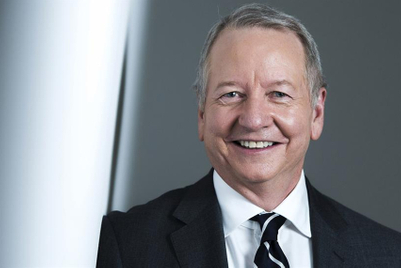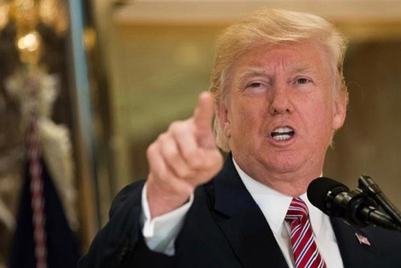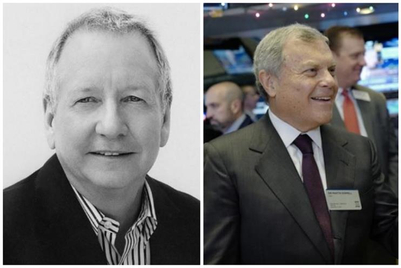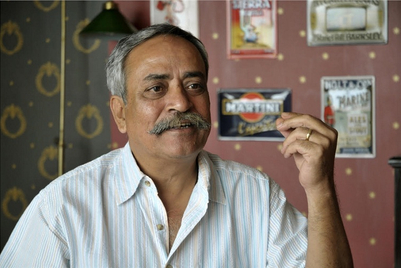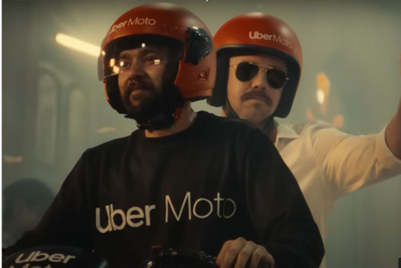During a recent visit to the country, John Seifert, global CEO, Ogilvy speaks with Campaign India's Prasad Sangameshwaran about the new simplified structure of the agency, the challenges for brands and agencies in an ever changing world and his top priority in hunting for a global CCO. Excerpts:
What are the challenges for the advertising business in a transforming world?
We are trying to restore the founder’s identity of Ogilvy in a transformed, modern world, how to market in a global multi-cultural context and how to think about making brands matter. In many parts of the world, there is a growing view that brands matter less. The truth is that brands are more important than ever because nobody can process all the information available without an emotional connection. We are excited about the challenge to make brands matter in a completely different world.
We want to be a company that’s not a collection of different capabilities, but to work as an integrated team to make brands matter and deliver it to clients and generate the value for those brands.
We are trying to stay completely true to the great qualities that David Ogilvy built the company on. When David started the company 70 years ago, messaging had a disproportionate impact in building the brand. Now brands are built on experiences created in devices.
Brand building requires a way of thinking and creating that looks at the whole brand. In the US, United Airlines spent more than a billion dollars advertising the notion of the friendly skies, but very publicly pulled a passenger off the plane. The episode that was captured on a dozen cellphones went viral and the passenger was badly injured and it looked like anything but the friendly skies. So, in an instant brands need to figure out how to deal with a difficult customer service issue. If they don’t get it right, they can put at risk all the positive things that they have created in the minds of their audience through advertising.
Isn’t the United Airlines episode culture specific? Less than a year after the United Airlines episode, Indigo Airlines, an Indian private carrier, bashed up a passenger. There was a furore for a week, but after that it’s business as usual.
In a situation like this, you can recover. Sometimes, you can recover very quickly. Going forward what will happen is that if consumers have options they are less likely to go with the brand that has a history of wrong doing. In that there is a risk of trust, confidence and an emotional connection with the brand is greater than ever before.
Increasingly all cultures have a higher expectation of how a brand should perform. If brands don’t perform to expectations, consumers have more ability than ever to complain, publicise their bad experience on social media.
But isn’t social media itself facing the brunt of fake news?
There is a big risk of that being true. All of these companies built a platform without necessarily the prescience that they were going to be responsible for the quality and safety of the content. They are now feeling this in a big way because their business model is linked to advertising.
They are no different than a media channel that allows inappropriate content. You have higher standards in regulated media. This is a big moment in the development of technology for social media. What those consequences are, we don’t know yet. There are issues of privacy, security, fake news. The wonderful thing about technology companies is that they all have a wonderful sense of urgency. They know something needs to be fixed. If it takes too long to fix it they will be in deep trouble.
Is the advertising industry showing a similar sense of urgency?
The advertising industry right now is going through more dynamic changes now than I have seen in all of my four decades in this business. The level of change that I am experiencing, some of which I am inflicting upon others is not something that I have experienced in my career. The changes might look like they are taking longer than they should to deliver the better outcomes that their clients want (faster, less expensive and more accountable for market outcome). Clients are frustrated that change is not being seen fast enough, but they are not immune to the problem. The advertising industry has very much been a reflection of the pace of change within clients. Many times agencies have been slapped on the wrist and told to slow down as clients are not ready for it yet. But clients are having their own sets of problems – not growing according to the expectations of investors, extreme cost pressures as new competitors have completely different business models making them more competitive.
The reason I come to India once a year is because I see India as a beacon market for our global transformation. My sense of how India works is -- it’s entrepreneurial, it’s a market that believes and cares about brands, it’s a market that wants to learn. I am a big optimist that the changes we are beginning to see will pay back in the long term. India is our fifth largest market in the world and it could well be the fourth or third largest in the next 24 to 3 months. In the number one market, US, the share as a percentage of the whole is declining due to fragmentation, conflicts and other issues that could make the US a lot more challenging. But what I find in India is that we work with some of the most admired global brands and India’s most successful local brands and with companies that want to change the world that were not even invented 2-3 years ago.
If you had to start your career today, would it still be in the advertising business?
I am not even sure if I would have been hired today. I was a college drop-out and we don’t hire college dropouts anymore in agencies. I was fortunate to have known somebody senior in Ogilvy who gave me a summer internship. Once I completed the internship, I persuaded them to give me a job and I was exposed to the entire Ogilvy system. I was mentored, given the opportunity to work in markets around the world, so I became a product of the system. That system has built my career over the last 40 years.
Today, we have an incredibly talented set of well qualified people to choose from. The challenge is that they don’t have the same trust in the institution that I did. They don’t know if they would have the same job for 40 years. Even if they wanted one, they do not know if it will be possible. It isn’t as easy to move people around the world, as it was when I started.
In the past, not many people wanted to work across the world. Now, 95 per cent of employees would love to work in multiple markets. Employees have means and expectations on dealing with financial security, how they accumulate wealth is very different, as the world is very disruptive. They could be out of a job for whatever reasons, they just don’t have the same faith. I never, never, never put money among the top five reasons of whether I wanted to stay in the job or go. It was always the experience or the learnings. I just took it for granted that if I performed well, money would come. That mindset does not exist.
I was speaking to a former Ogilvy creative leader who’s now with Google. They hire these exceptionally talented 23-year-olds who do not even accept the job, without declaring that they would probably do this for two years. We just cannot manage people in a top down manner anymore. You have to walk in their shoes, experience their pain points, learn from their perspective and treat them like partners. You need to be both a leader and a follower, irrespective of whatever level you are in the organisation. Then, we have to be open minded about building the most inclusive and diverse culture as it drives better creativity more innovation and better results.
Is the role of a global CCO becoming irrelevant as culture plays an even more important role in shaping advertising creativity?
I don’t think so. The role is to instill values, quality standards and respect for creativity in a broader sense. We need that leadership. We don’t need a global CCO to sit there and approve each campaign that comes from everywhere in the network. The role now is about inspiration. David Ogilvy did three things -- defined standards of the work, defined culture that differentiated the company and served clients. You do those three things and you would be a fantastic CCO.
On Ogilvy’s 70 years as an agency, who will fit into the shoes of David Ogilvy as the agency’s global CCO?
That’s unfinished business for me and my top priority. The debate that’s going on in my mind is that we want to fill that position with somebody who embodies the point of view, beliefs of David Ogilvy and would be a person who I know could lead the company, if anything happened to me and could well lead the company beyond my usefulness. I do believe that creative leadership is at the heart of what has made us successful as a business and whatever the title is, if we do not have the creative leadership that the world respects, we would not live up to David Ogilvy’s standards.
I have a range of people (both internal and external) that I am thinking about in the context of what I just described. This is a moment to think both outside and inside. It’s the highest priority on my to-do list.
Also, in key markets like the UK there has been a lot of bloodshed in your agency in recent times….
It’s really simple about what happened in the UK. It was probably the most fragmented of our large markets. We have pretty distinct P&L’s with sub-branded offerings and a quite complex portfolio with competing global, local and regional clients. It’s always been, by design, one of our most challenging markets in terms of structure.
When we declared that we were going to simplify the company and put everything into one integrated model – one P&L and ideally one master-brand called Ogilvy – a number of people in the UK were not sure if that’s the right model. Nobody was nasty about it, but a number of leaders in that market felt that it was better for them to say that they were leading a particular business unit and not that they were part of an integrated solutions team. Over the last few months, after we formally declared the shift to this new model, a number of those leaders chose to do something else. The fantastic thing is that the glass is half full in the UK. There were a lot of talented people who wanted to go to the new model and they have been executing that model even without the formal changes and introduction. We also have a lot more people who want to join the agency now, in terms of what we are doing strategically and structurally. While it’s disruptive, I am fully confident that we have people at every level who are completely supportive of where we want to go. Over the next few weeks, the replacements of the key leaders will be in place and they would absolutely drive the business forward in a positive way. Our UK business leader brings in a style that’s very inclusive and horizontal. He is not going to have any problem in building an amazing team. He has my full backing -- 1000 percent.
Post the integration of Ogilvy, is the re-integration of media into the creative agency, another possibility in the future?
I would say that we need to have integrated capabilities to serve client needs. The world of media is so demanding in terms of the scale it takes and the tools and technology employed to serve client needs, I do not see a complete consolidation of media and the creative and strategy side of the coin. But I do know that we are working more closely with every media partner to serve the client. And the day where media was in a separate compartment is over. Every client wants it closer but in their own preferred way.




.jpg&h=334&w=500&q=100&v=20250320&c=1)
.jpg&h=334&w=500&q=100&v=20250320&c=1)



.jpg&h=334&w=500&q=100&v=20250320&c=1)



.jpg&h=334&w=500&q=100&v=20250320&c=1)
